-
Posts
2,567 -
Joined
-
Last visited
-
Days Won
1
Content Type
Profiles
Forums
Blogs
Gallery
Events
Store
Posts posted by Alex K
-
-
HI SPM so its older than previosuly thought
 , thanks for the comments most helpful
, thanks for the comments most helpfulRegards
Alex
0 -
I would guess a latvian fake, the swaz looks wrong and the suspension loop is to long. Poor finishing on the eyelet
regards
Alex
0 -
Hi Gentlemen, TerryG thanks for the link, most interesting place. I normally like to get to place like Duxford, Hendon, Cosford etc a couple of times a year, didn't know ths place existed. Must put it on my list. I agree the taxi ride is a bit pricey, but there again, you have to pay for those four Merlins, gobbling juice up

regards
Alex
0 -
Sorry, agreed, fake
Alex
0 -
Hi TerryG, am I getting the wrong end of the stick? are you saying that this is a privately owned lanc?, Is it airworthy?
regards
Alex
0 -
Once more I concur with PKeating (Paddy) it is a very desirable piece. BTW, it does look like the type which was used for many fake one piece pot metal castings which floated around during the 60's and 70's IMO. there are many similarities example posted here, or do others think not?
http://gmic.co.uk/index.php?showtopic=15291
regards
Alex K
0 -
thank you gentlemen, so the change happened to all RAO's at that time and was not a manufacturer's personal preference
regards
Alex
0 -
Thanks nearly as old as the wife then!

 on a serious note, any explanation as to when they went from smooth arms to pebbled, or was it an individual manufacturer's preference?
on a serious note, any explanation as to when they went from smooth arms to pebbled, or was it an individual manufacturer's preference?regards
Alex
0 -
Hi nesredep A beauty, congrats, I want one
regards
alex
0 -
Hi guys, thanks any idea as it's period?
regards
alex
0 -
I have the attached example of the order of the red eagle 4th class, been in my collection for a good number of years. I have noticed that other forum members have posted many examples of imperial bars with this medal included. All the bars I have seen so far show this medal with what I would call "pebbled arms". My example posted shows smooth arms.
There are no obvious makers marks except for the underside of the lower arm, which seems to show some form of stamp/marking, ( apologies the gubby fingers) which to me are undefinable.
Any assitance in identifying this piece would be greatfully recieved
regards
Alex
thanks
Alex K
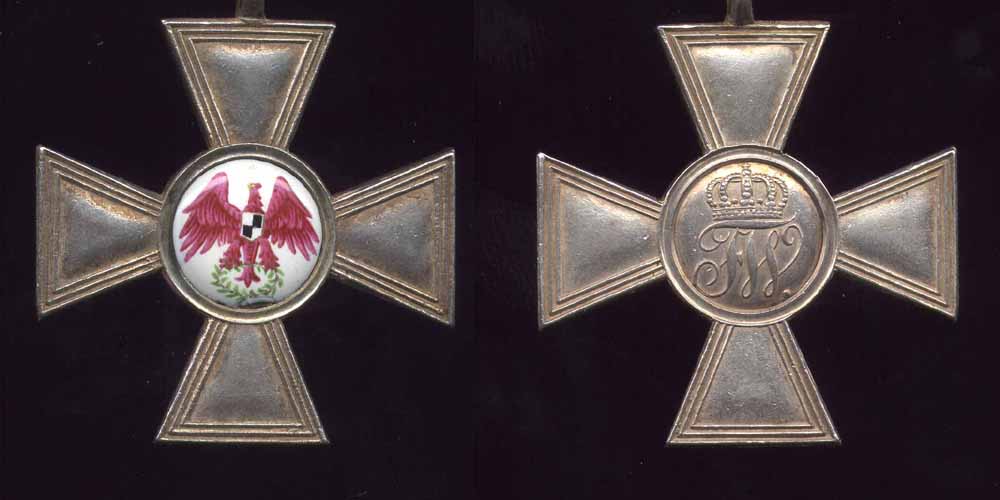


 0
0 -
Hi kevin, a most interesting and impressive monument. Forgive my stupidity but I assume this is an anti-fascist memorial.
Alex
0 -
Hi Greg, thanks for the info, I may well contact them to see if there is any more info
regards
Alex
0 -
Hi Kevin thanks, I'm actually suprised and obviously pleased with all the assistance I've received. As I said in my post this was a chance purchase (If I am to be completely honest, it was a cross I likes the look of and it was cheap 25GBP). As you may well know, non British medals generally are not named so research into it's history sometimes is a futile exercise. With a name, I can at least try to assemble some further info on the recipient's and the medal's history.
Regards
Alex
0 -
As an update to the info already posted, I have received further confirmation and information from another forum where it was posted previously, with thanks to PolAntek, I quote,
“You have a genuine pre-1939 Polish made 5th Class Virtuti Militari cross. It was part of the last official government order for this decoration that was placed with the Krupski & Matulewicz factory. Krupski & Matulewicz produced most of the Polish 2nd Republic government issue 5th Class Virtuti Militari crosses. These crosses are differentiated from the other more common Krupski & Matulewicz crosses by the absence of a machine stamped serial number, but rather a manually engraved one. The machine stamped crosses were numbered up to 9999. The manually engraved ones numbered 10000 +. The purpose of this small final order was to obtain some crosses that were supposedly to be awarded primarily to foreigners for acts of bravery in combat (i.e. such as French and US forces who took part in the Polish-Soviet war of 1920). The manually engraved ones are also of a higher quality than the other earlier produced ones, and this is consistent with the Polish practice of producing higher quality decorations for awarding to foreigners. It was well known that the Polish government was not satisfied with the quality of the initial runs of crosses.
Surplus unawarded Virtuti Militari crosses were removed from Poland in September 1939 ahead of the advancing Germans and Soviets. These ended up in Paris until forced to move again in 1940 to London when France fell to the Germans. For some reason the hand engraved ones ended up being awarded to soldiers of the Polish 2nd Corps fighting in the Mediterranean campaigns, and in particular the victory at Monte Cassino in May 1944. The machine stamped crosses were distributed to the 1st Polish Corps that was first assembled in France and ultimately based in Great Britain. The majority of these of these crosses ended up awarded to Polish pilots who played a pivotal role in the Battle of Britain in 1940.
So what it all boils down to is that you have a rare and valuable cross. It appears to be # 10024, which was awarded to Major Ludomir Tarkowski of the 3rd Carpathian Rifles Division of the Polish 2nd Corps. It is mounted to a period ribbon with the characteristic “wz.29” hook and eye fastening. Current market value is about $1000 (one recently sold for 2800zl = 508GBP)”
What interests me is that the Polish 2nd Corps was attached to the British 8th Army, which fought up through Italy, prior to this, the previous independent Carpathian Rifle Brigade of which he may have been a member fought with the 8th Army at Tobruk, which makes me believe that he would have been entitled to additional British campaign medals and awards (Afrika Star, Italy Star, Victory and Defense medals?), in addition to any further Polish ones, including possibly the Monte Cassino Cross for the 4th Battle in 1944.
It seems my chance purchase is turning into a nice research project
Regards Alex
Alex
0 -
Hi John, is the ek a single piece or a proper 3 piece construction, looks quite scary for a novice collector
regards
Alex
0 -
Hi Ed, I also don't know why it's in English, but any idea what it says on the reverse? I can't quite make it out
It looks like "One ** Iraq * **** 2006
Regards
Alex
0 -
Here's an original made by Wagner to compare with
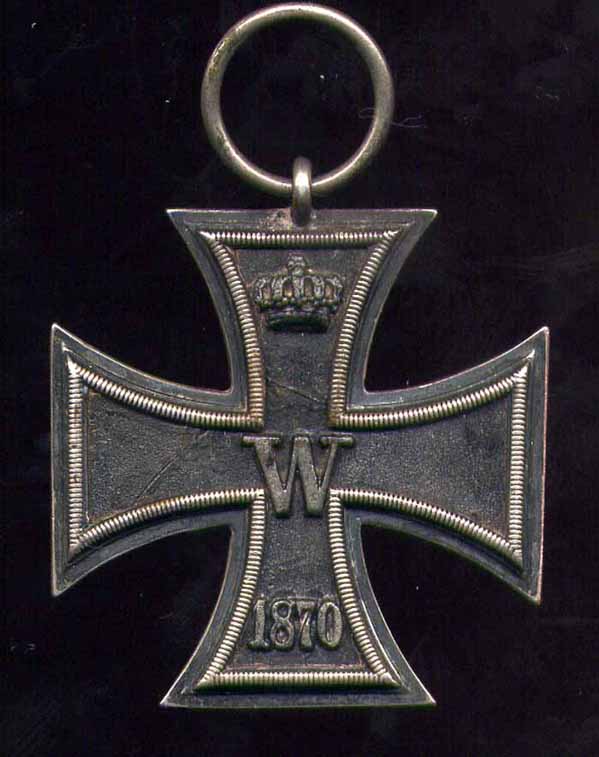


 0
0 -
Hi can't quite decide yet but it looks to have been repainted at some stage
regards
Alex
0 -
Hi Laurence, yours shows similar poorly defined rays as mine, however yours shows 5 rays, but not a clearly defined as an original. similar incorrect proportions between the blue and white enamelling, although it appears that the colour resembles the original more closely,the reverse looks like it was literally hand engraved. From the photo, it looks like the ribbon is about the right width,is that correct? What really hits me in the face is the position of the inscription around the central swastika, completely the other way round
yet another variation, thanks for posting
regards
Alex
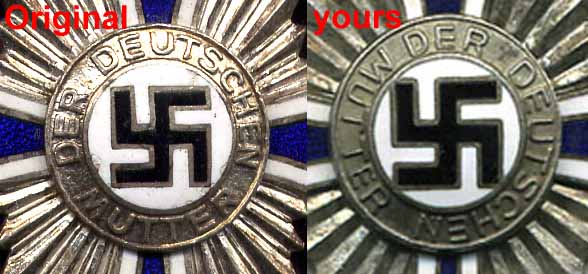
 0
0 -
details
Oops I've done it again, posts the wrong way round, help!



 0
0 -
Attached are two examples of fake Mutterkreuz in my collection, shown besides a genuine example, these are fake 1, fake 2,3 and genuine 4.
Fake 1 is very close to an original but I believe to be a casting due to several flaws, in the manufacture which do not suggest an original die flaw, the reverse is quite close. Additionally it has several dimples in the enamel that I would not expect to see. It did come with a piece of ribbon that matches the original in all dimensional respects. It was obtained in the 1990?s
Fake 2 & 3 obviously come from the same source, these are 1960?s 70?s fakes, the differences are quite stark, dimensions of the cross are wrong, they are slightly thicker, the proportions of the blue/white enamelling is wrong, the blue enamel has a slightly lighter more translucent appearance to it, the rays between the arms have three clearly defined splays and not the five encountered on the original (or fake 1 for that matter) the reverse however is the obvious give-away, additionally the ribbons used were far wider, resembling the Baltic cross more.
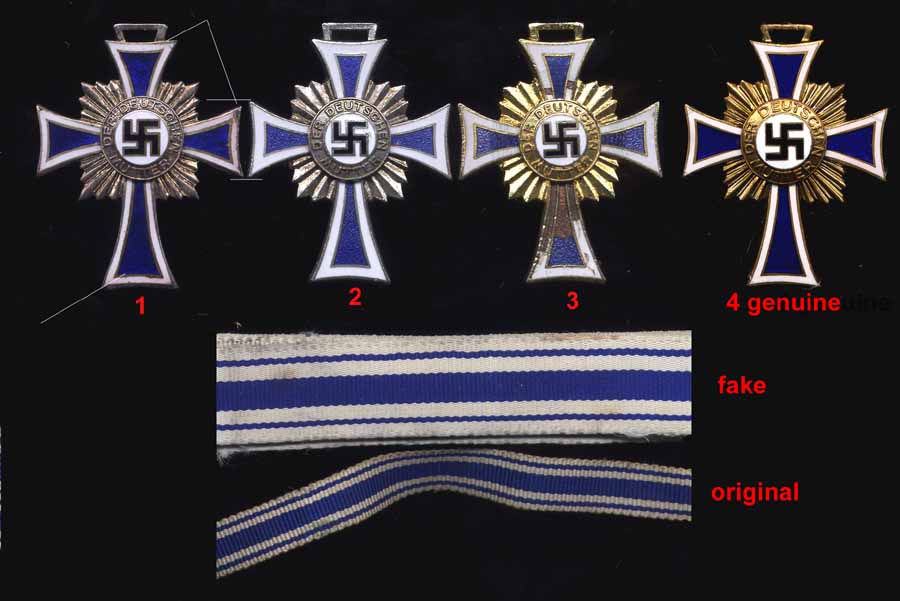
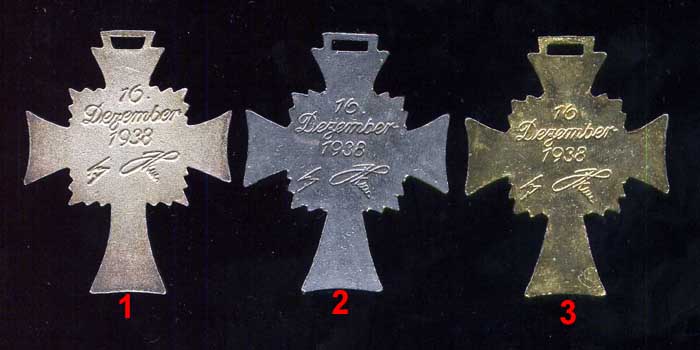

 0
0 -
thus explaining the lack of Hapsburg naval successes--
either the ships' crews were laughing themselves silly, or it took so long to cry out
"Incoming torpedo, Herr Linienschiffsleutnant Freiherr von und zu Aichelburg Herr auf Potenhof und Greiffenstain!"
that the Italians sank them.



 0
0 -
Kevin This issue of pardons for ww1 soldiers guility of cowardice "in the face of the enemy" has created some debate in the UK. There has been a campaign for a "Blanket pardon" for all those so judged, however it was felt that this would not distinguish between those who were genuinely suffering from shell shock or post traumatic stress disorder as it is now known, (bearing in mind that the condition was not recognised at the time) and those who genuinely deserted their post or similar. A blanket ban was therefore thrown out. However a fair number of soldiers appear to have been pardoned in addition to the two mentioned in your post
Attached is a link on a similar vein
http://news.bbc.co.uk/1/hi/uk/4796579.stm
regards
Alex
0



Militarverdeinstkreuz kreuz with KD
in Austro-Hungarian Empire
Posted
Just to resurrect this for another silly question, How are the swords attached to the ribbons, I've had a look and can see no obvious method of securing the swords, were they sewn on? there doesn't appear to be any pins through the ribbon.
regards
Alex